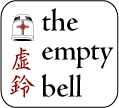
image © Robert Jonas
Most Christians of every denomination think of Jesus as a healer. He prayed for people, spoke comforting words to the afflicted and touched the wounded. He raised people from the dead. We cannot be sure how Jesus understood the results of his healing ministry, but we can guess that his goal was not to merely take away peoples’ pain or all of their mortal limitations. Most often it seems that what Jesus wants people to get in a healing is eternal life. A healed person is a converted one, a person who realizes a new personal identity as one who comes from God and is going to God. Such a person knows that he or she lives a limited, chronologically circumscribed life, and yet one also feels oneself to be standing in a place of love, blessedness, freedom and healing that is timeless. In Jesus’s mind, such a person refocuses his or her life to love God and others in unselfish ways. St. Paul would call such a state of consciousness the mind of Christ–something that we already have, if we but turn to God in each moment. This much seems clear.
What might it mean for Christians on the contemplative path to be healed. Most of us would say that we want to be healed in body, mind and spirit, but how exactly is a healed body, mind or spirit different from a wounded one? It has been said that a cure is different from a healing in that a cure removes all pain and while a healing may not. Another important distinction can be made between pain and suffering. Pain usually refers to the actual physical sensation of discomfort, but suffering often adds an emotional and cognitive dimension. Does the contemplative Christian path offer a life without pain and suffering? We think not. We alert the reader to these nuances of the word healing only to acknowledge the complexity of the word and to confess that what we are about to say is intended to be only one offering to a conversation that we hope will grow.
In the developed countries, a person who perceives himself or herself to be ill, suffering or wounded can seek many alternative paths for healing. A host of spiritual paths, some ancient and some recently birthed, offer wisdom, inspiration and relief from suffering. Western medicine itself offers many choices for dealing with physical and mental pain. One can seek psychiatric care, psychopharmaceutical drugs, prescription drugs, radiation, and surgery. Other professional paths include physical therapy, psychotherapy, hypnotherapy and chiropractic. In addition, a host of peer-led organizations such as the various 12-step programs are available in most communities. When we perceive ourselves to be suffering in America (and if we want to be healed) we must decide if it is a matter of body, mind or spirit–or all three simultaneously–and then scan our communities for healing resources. But the dynamics of suffering and healing are not just matters of personal preference.
Unfortunately, the rich have many choices and the poor have few, a tragic reminder that suffering is not only a personal matter, but a political and economic one, as well. In addition, our planet as a whole is now entering more intensely into the suffering of overpopulation and dramatic human-caused climate change. Large scale events like these affect every individual on this planet, and healing requires the marshaling of remedial intentions and forces at every level of our lives. The contemplative Christian life can be an important resource, but we need to see this spiritual path in the context of our planetary eco-system, our various economic and political environments, and in the families, friendship networks and neighborhoods in which we live.
As the director of the Empty Bell and the author of these essays I have a very limited experience of the many healing paths that are available to Christians on the contemplative way in America today. Therefore, the reader should consider these words to be only the beginning of what we hope will become a larger conversation. As a Christian, I have almost forty years of experience as a seeker of the healing and wholeness that I’ve glimpsed in the Gospels and in Christian community. During this time, I’ve sought healing of mind and spirit primarily as one who is oriented to Jesus’ vision of the kingdom of God as a real possibility, and I’ve also sought personal healing and wholeness in two other traditions of healing–Buddhist meditation and psychotherapy. In each of these paths I have been fortunate to receive resources for healing that I could not find in the Christian community, and in each one I found teachings and teachers that seemed to augment–and not to contradict–the healing presence of Jesus Christ.
To begin the conversation about how the contemplative Christian life can be integrated into other psychological and spiritual paths, I offer two essays. One, called Becoming the True Self: Spiritual and Psychological Perspectives for the 21st Century, discusses healing and personal wholeness as described in Christian contemplation, Buddhist meditation and relational psychotherapy. In this essay, each healing path is described separately, and it is up to the reader to see or discover interesting or helpful bridges of understanding among the paths. The second essay is called Cigarette Smoke and Incense, also a chapter in a forthcoming book called Into the Mountain Stream: Psychotherapy and Buddhism. Paul C. Cooper, editor. Lanham, MD: Jason Aronson, 2006. This essay shows how the same three paths can be integrated in a momentary personal experience of healing.
Again, these essays are meant to begin a conversation that we hope will gradually grow larger and integrate other avenues of healing, especially in the political, economic and environmental dimensions. Please check back on these pages for further essays that connect healing, prayer, and social action.
Essays mentioned above
Cigarette Smoke and Incense: A Perfect Storm of Healing, a chapter in Into the Mountain Stream: Psychotherapy and Buddhism. Paul C. Cooper, editor. (Lanham, MD: Jason Aronson, 2006.)
Becoming the True Self: Spiritual and Psychological Perspectives for the 21st Century
by Robert A. Jonas
© Robert A. Jonas, 2006-2023 (reprint by written permission only)
